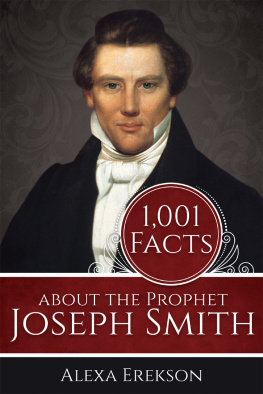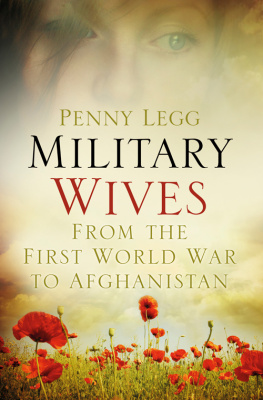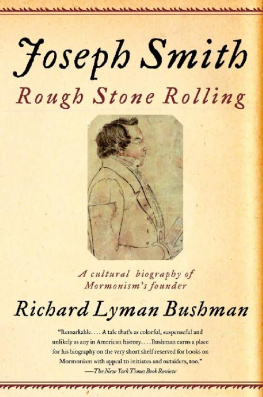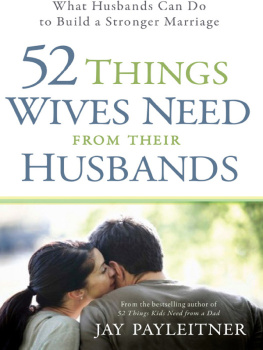In Sacred Loneliness
The Plural Wives of
Joseph Smith
Todd Compton
Signature Books Salt Lake City
To my parents
who gave me ideals of faith and honesty
Jacket design by Ron Stucki
1997 Signature Books. All rights reserved. Signature Books is a registered trademark of Signature Books Publishing, LLC. Printed on acid-free paper. Printed in the United States.
2018 2017 2016 2015 201414 13 12 11 10 9
Library of Congress Cataloging-in-Publication Data
Compton, Todd
In sacred loneliness : the plural wives of Joseph Smith / by Todd Compton
p.cm.
Includes bibliographical references.
ISBN 10: 1-56085-085-X
ISBN 13: 978-1-56085-085-4
1. Mormon womenBiography. 2. WivesUnited StatesBiography. 3. Smith, Joseph, 1805-1844. I. Title.
BX8693.C65 1996
289.30922dc20
[B]
96-19033
CIP
INTRODUCTION.
This book had its genesis in a research fellowship I received from the Huntington Library in 1992. My interest, among other things, was Eliza R. Snows pioneer diaries, housed in the Huntingtons impressive document collection. As a leading woman of early Mormonisma poet, female activist, secret polygamous wife to Latter-day Saint (LOS) church founder Joseph Smith, and later a wife of Brigham YoungSnow seemed significant enough to warrant further attention, even though much had already been written about her. Particularly interesting to me were her oblique allusions to other plural wives, sometimes referred to by given name, sometimes by maiden or married surname only. To identify these women, I knew I would have to consult reliable lists of the marriages of Brigham Young, Heber C. Kimball, and Joseph Smith. Jeffery Johnson had published a good list of Brigham Youngs wives, and Stanley Kimball had provided a full list of Hebers. Nevertheless, for Smith himself, I could find no definitive listing of his plural marriage partners.
Andrew Jensons century-old list of twenty-seven of Smiths plural wives provided a core of basic data. In the 1950s Stanley S. Ivins compiled an unpublished list of eighty-four women, but many of these were only seatings to Joseph after his death. The first fully annotated, footnoted inventory of Smiths plural wives was the appendix of Fawn Brodies No Man Knows My History, published in 1945, with minor updating in the 1971 edition. Although Brodie was a pioneer in documenting Smiths polygamy, fifty years of secondary publications and classification of primary documents have dated her book, and, moreover, scholars have faulted her for relying on antagonistic sources that have since proven unreliable
Eventually I concluded that a full, complete, up-to-date list of Joseph Smiths wives would be a valuable addition to Mormon studies, and my project on Eliza Snow metamorphosed into an investigation of all of the wives of Joseph Smith, with Snow being one among many. Since early polygamy was secret and not officially documented, there are still many uncertainties in even a conservative, carefully documented description of Smiths extended family. Nevertheless, this book furthers research on these women, provides an update to Brodie, and attempts a more balanced evaluation than her book offered.
Viewing Joseph Smiths Wives Holistically
Since the evidence on many of these women is ambiguous and problematic, I divided my list into two categories: women who were certainly or very probably married to Joseph Smith during his lifetime and whose marriages are supported by affidavits, reliable testimony, or multiple pieces of evidence; and possible wives whose marriages to Smith are supported by limited and inconclusive evidence. In addition, there are women whose marriages to Smith are poorly documented (supported by weak evidence, often sensationalized, contradictory attestations, lacking multiple confirmations) and might be called improbable candidates. There is also a category of posthumous marriages in which women were married (i.e., sealed) to Joseph after his death without evidence of a marriage relationship during his life.
Having arrived at a group of certain wives, while other studies have analyzed the marriages of these women in some detail, I try to view them holistically, from birth to death, devoting a full chapter to each woman. A study of their whole lives, apart from the intrinsic value of looking at important early Mormon women carefully, also shows the impact of their connection to Smith in their later lives. Most of them, because of their marriages to the Mormon prophet, became proxy wives to Mormon apostles and other leading Mormons, especially to Brigham Young and Heber Kimballsealed to Smith for eternity, with the apostle standing in as Smiths proxy in the flesh, to raise seed to Smith in this lifeand thus the proxy husband was married to the woman only for time. This arrangement had significant advantages for the women (high status and visibility in Mormon society) and certain drawbacks. As Young and Kimball were among the most married of Mormons, many of Joseph Smiths widows experienced the difficult trial of living in very large polygamous families.
These women were extraordinary in many ways. Many were authentically heroic;, living lives of loss, hardship, and tragedy. Most were pioneers, sometimes throughout their lives, moving from New England to Ohio, then to Missouri, to different parts of Missouri, to Nauvoo, to Winter Quarters, and on to Utah. Houses were built, then abandoned, with nearly every move. When they reached the Salt Lake Valley, and may have been anticipating a well-deserved rest, Brigham Young often sent them to settle outlying colonies in southern Utah, Idaho, Nevada, Colorado, California, and Arizona, where they endured desert conditions and were sometimes menaced by hostile Native Americans and outlaws. Eliza Partridge Lyman participated in virtually all of these migrations, helping to settle the almost inaccessible badlands of San Juan County in southeastern Utah. Another of Josephs wives, Agnes Coolbrith, traveled from Boston to Ohio, Missouri, Illinois, and through Utah to California.
While my study may be revisionist in some ways, it is also unabashedly celebratory. As it praises thirty-three women, it nevertheless looks at them and other early Mormons seriously and we see Mormon history from a new perspectivenot from the viewpoint of male church leaders but from the viewpoint of women. This book tries to celebrate early Mormons in a responsible, balanced wayall of its characters, female and male, Relief Society president and prophet, had weaknesses as well as strengths. Those who would portray Mormon history as carried on by superhuman men and women, without flaws, would turn them into inhuman automatons, which in fact betrays a deep disrespect for the real humanity of our foremothers and forefathers.
Recovering Clues to Forgotten Lives
All historians are subject to the limitations of the evidence available, and this book is no exception. But it is surprising that these key women have been comparatively forgotten, especially considering the reverence Mormons hold for their founding prophet, and considering how important polygamy was to Smith. In fact, one occasionally meets Mormons who have no idea that Joseph Smith had plural wives at all; twentieth-century Mormons are undoubtedly uncomfortable with the details of nineteenth-century polygamy. In any event, many of these women are poorly documented, and it was difficult to reconstruct their lives. For some, even their death dates are unknown. Others, such as Sarah Bapson and Olive Andrews, have seemingly dropped out of history almost entirely.
When a woman is poorly documented, I have resorted to various strategies to trace the outline of her life. The first sources I have turned to are naturally the writings of the women themselvesdiaries, autobiographies, lettersall of which, despite their obvious value, have limitations. Diaries lack hindsight and historical perspective. Eliza R. Snows Nauvoo diary, for instance, never overtly mentions her marriage to Joseph Smith. On the other hand, autobiographies idealize and often lack precision in dating. Letters preserve only half of a conversation.







